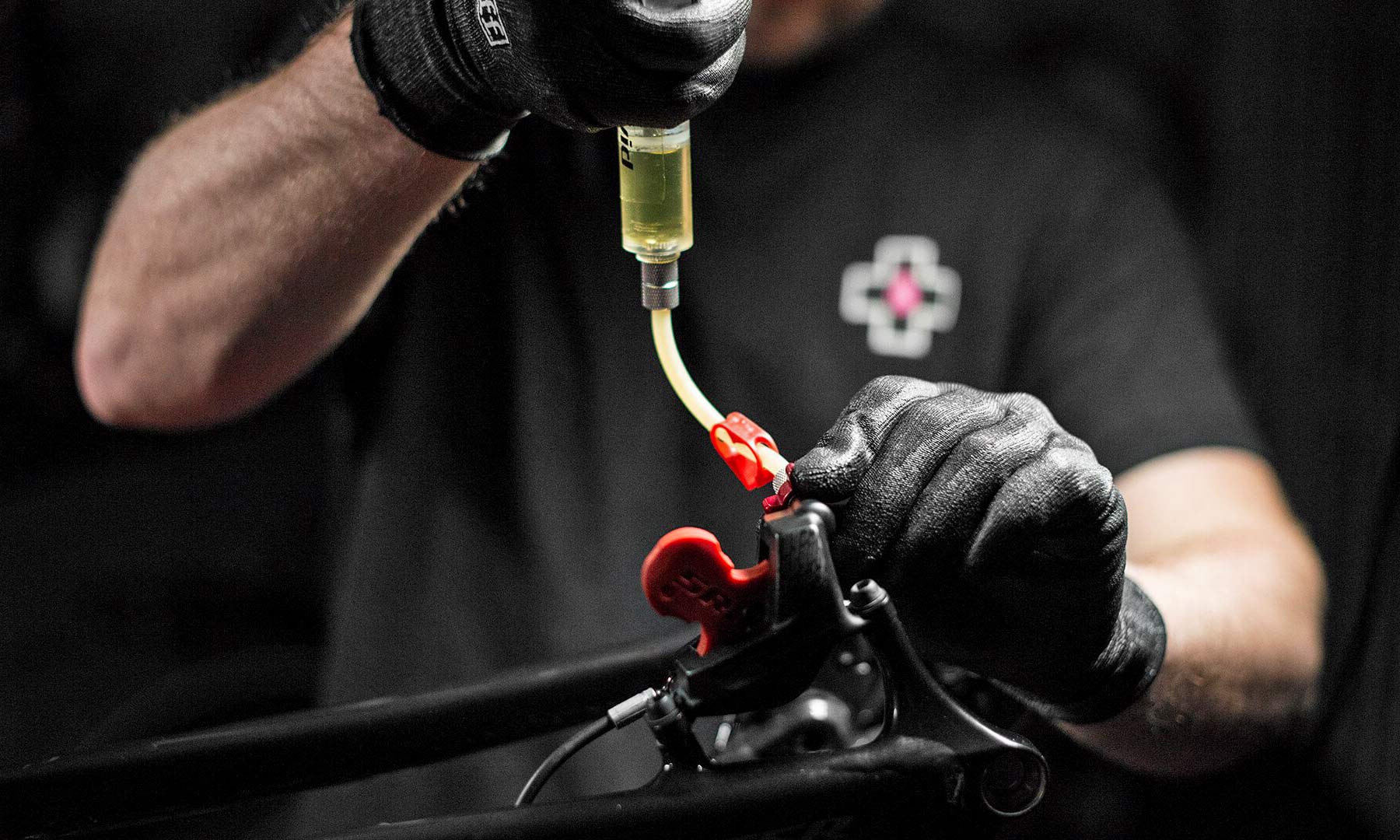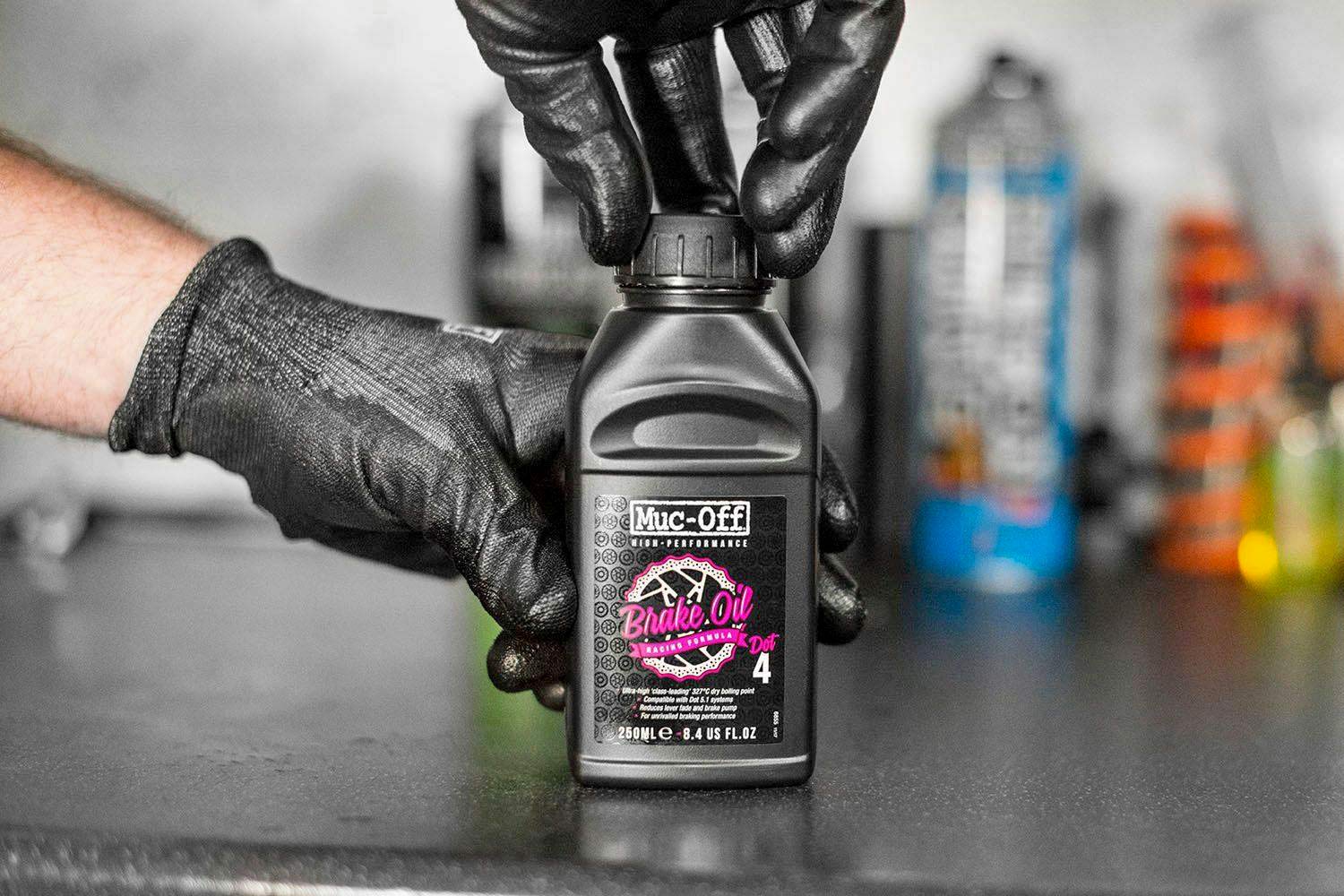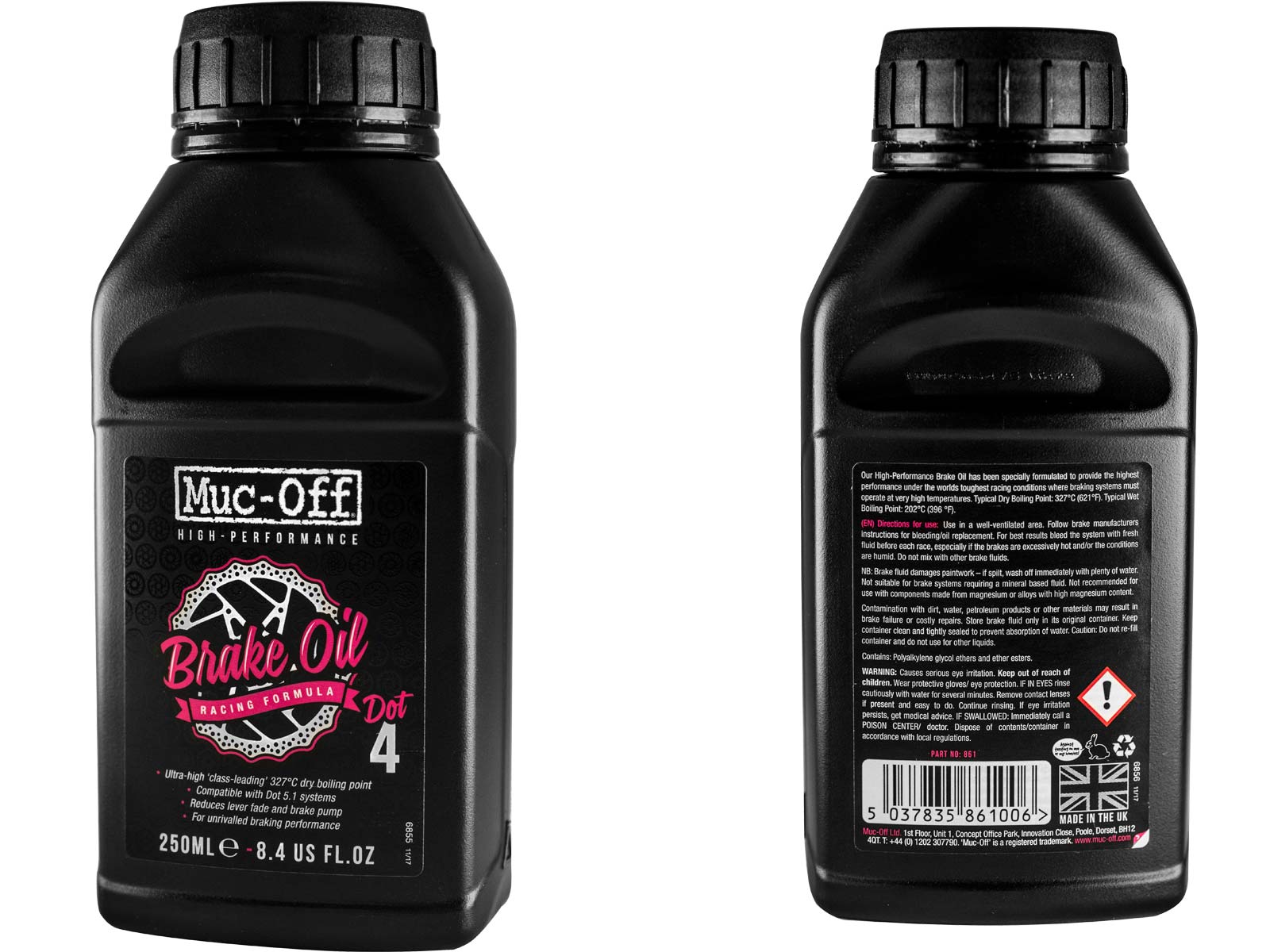Most cyclists don’t think twice about the fluid in their hydraulic disc brakes, at least until it starts getting squishy or fading. When the time comes to bleed, Muc-Off has a better option for DOT fluid brakes, with their High-Performance Brake Oil.
Muc-Off High-Performance Brake Oil for DOT hydraulics
When it comes time to bleed our brakes, we typically use whatever originally came with the brake system. Or for that matter, we let out friendly neighborhood bicycle mechanic sort it out. For the most part with hydraulic disc brakes from Avid, Formula, Hayes, Hope or SRAM that is a DOT 4 or 5.1 fluid.
But now the descriptively named High-Performance Brake Oil from Muc-Off might be a better option. Muc-Off’s unique new glycol-based DOT 4 fluid uses a proprietary mix to outperform every other DOT 4 or 5.1 fluid we’ve seen. With a 327°C dry boiling point & 202°C wet boiling point, that makes it work up to 30-40% higher temps than typical 4.1 fluid, and even 6-21% higher temps than regular DOT 5.1, which had become the industry standard.
That means it should resist brake fade better than any other OEM DOT or Mineral Oil when fresh, and still beat out other DOT fluids over time – making for an ideal solution in the most taxing riding conditions.
Muc-Off actually set out to develop better fluid in direct response to DH & gravity pros they were already supporting who were suffering brake fade and lever pump in competition. The new fluid was developed and tested on the World Cup circuit last year and now is available to consumers.
Muc-Off High-Performance Brake Oil comes in a 250ml bottle and is available now for £20.


